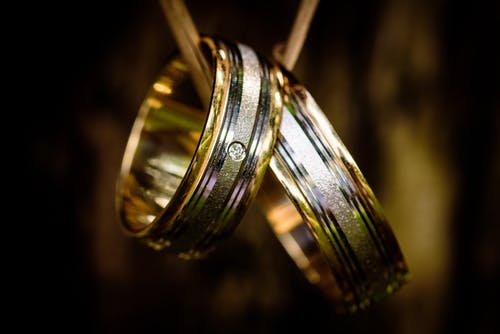Origin
Though the exact origin is unknown, historians primarily believe ancient Egypt started the tradition most like our modern wearing of a wedding band. … Additionally, Egyptians wore wedding bands on the ring finger of their left hands. They believed this finger held a special vein directly connected to the heart.

What does the ring symbolize?
A circle has no beginning or end and is, therefore, a symbol of infinity. It is endless, eternal, just the way love should be. For many, the wedding ring is worn on the fourth finger of the left hand. This is because the vein in this finger was believed to lead directly to the wearer’s heart.
Myth & Legend
The Greeks (and Romans) believed that there exists a vein that, from the ring finger, goes all the way to the heart. It was called the “vena amoris” which loosely translates to “vein of love.” While there’s no scientific backing to this claim, it still makes for a nice thought.
Fun Theories
The Chinese have an interesting theory in which each finger represents some part of your family. The index finger is for your siblings, the thumb for your parents, the middle finger is you, the pinkie finger is for your children and the fourth finger, the ring finger is your life partner. That’s why when you lay your hand flat on a table, the ring finger is the hardest to get off the table just by itself!

Another alternative that is a fairly common practice is to tattoo your spouse’s initials on your ring finger to symbolize love and marriage.
To Be Faithful

Men of the Far and the Middle East had a unique way of ensuring that their brides remained faithful. They created “puzzle rings,” rings that were collapsible. If a wife tried to remove her ring, the ring would fall apart. The ring could be put back together, but only if one knew the correct arrangement. If the husband had to travel for business or during wartime, the puzzle rings were used to keep the wife true.
Throughout history, while the ideas of marriage changed along with the styles of the rings that represented it, the ring finger also changed. Weddings rings have been documented to be worn on every finger, even the thumb. Today it is most commonly worn on the fourth finger of the left hand, but some countries and cultures do it differently. Most notably moving the engagement ring to the right hand after the wedding or the reverse. But how did the fourth finger become known as the ring finger? Well that goes back to the Egyptians again (…or early Romans depending on who you ask.) They are said to have believed that the fourth finger had a vein or nerve that connected directly to the heart. And while there is not a bit of scientific evidence to support it, we returned to that tradition out of pure sentiment. Which might just be my favourite part of the wedding ring’s story.
